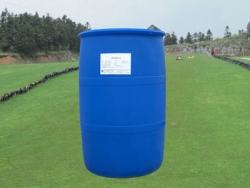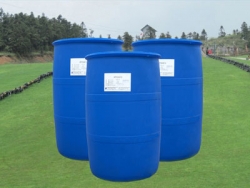The direct glycosidation method is also called a one-step method, and is a method for directly synthesizing an alkyl glycoside under the action of an acidic catalyst using glucose and a high-carbon fatty alcohol as raw materials. In the direct synthesis process, alcohol and sugar directly acetalize to synthesize glycosides, without the introduction of lower alcohols. The raw material cost is reduced, the process flow is more concise, and the reaction speed is faster. Compared with the transglycosylation method, the direct glycosidation process has the advantages of high glycosidic yield, short reaction time, short synthetic route, low energy consumption, easy operation and low cost. However, due to the insolubility of glucose and higher alcohols, the research hotspot of this synthesis method is still in the improvement of the choice of catalyst. Commonly used catalysts are p-toluenesulfonic acid, dodecylbenzenesulfonic acid, composite catalysts and the like.

At present, many researchers have done a lot of research work on the catalyst selection and working conditions in the direct glycosidation synthesis of alkyl polyglycosides. A lot of gratifying results have been achieved. For example, in Yanchuan (4), alkyl glycoside was synthesized by one-step synthesis of composite solid superacid catalyst S042-/Zr02-Ti02. The catalyst has the characteristics of high catalytic activity, easy production, reusability and easy regeneration. It is an excellent catalyst for synthesizing alkyl polyglycosides.

The transglycosylation method is also called a two-step method. First, a reaction between glucose and a lower alcohol produces a low-carbon chain glycoside, and an alcohol exchange reaction between a low-carbon chain glycoside and a higher alcohol produces a high-carbon chain glycoside. The method better solves the problem of compatibility of glucose and higher alcohol among raw materials, makes synthesis easier to implement, and overcomes the disadvantages of caramel production during direct glycosidation, but the process is complicated, and low carbon glycosides and high The conversion of carbon glycosides is generally not very complete.
At present, the synthesis of alkyl glycosides by transglycosylation is mainly to improve the catalyst, and the catalysts with better effect are as follows, such as HCl, H:S0. And H, P04, etc.; sulfonic acid catalysts, such as p-toluenesulfonic acid, alkylbenzenesulfonic acid, p-toluenesulfonic acid pyridinium salt; in addition to supported heteropolyacids and strong acid type ion exchange resins; Acid or several acids co-catalyzed.

The initially synthesized alkyl polyglycoside generally contains a large amount of free fatty alcohol, and the free fatty alcohol has an influence on the performance, quality and application of the product, so in order to produce a high quality alkyl polyglycoside product, the obtained alkyl polyglycoside is required. The alcohol removal purification treatment is carried out. However, due to the high temperature in the dealcoholation process, the thermal decomposition of the glycoside and the polycondensation reaction of the residual sugar are caused to form a colored substance, so that the decolorization is performed after the dealcoholation is completed to meet the production requirements.